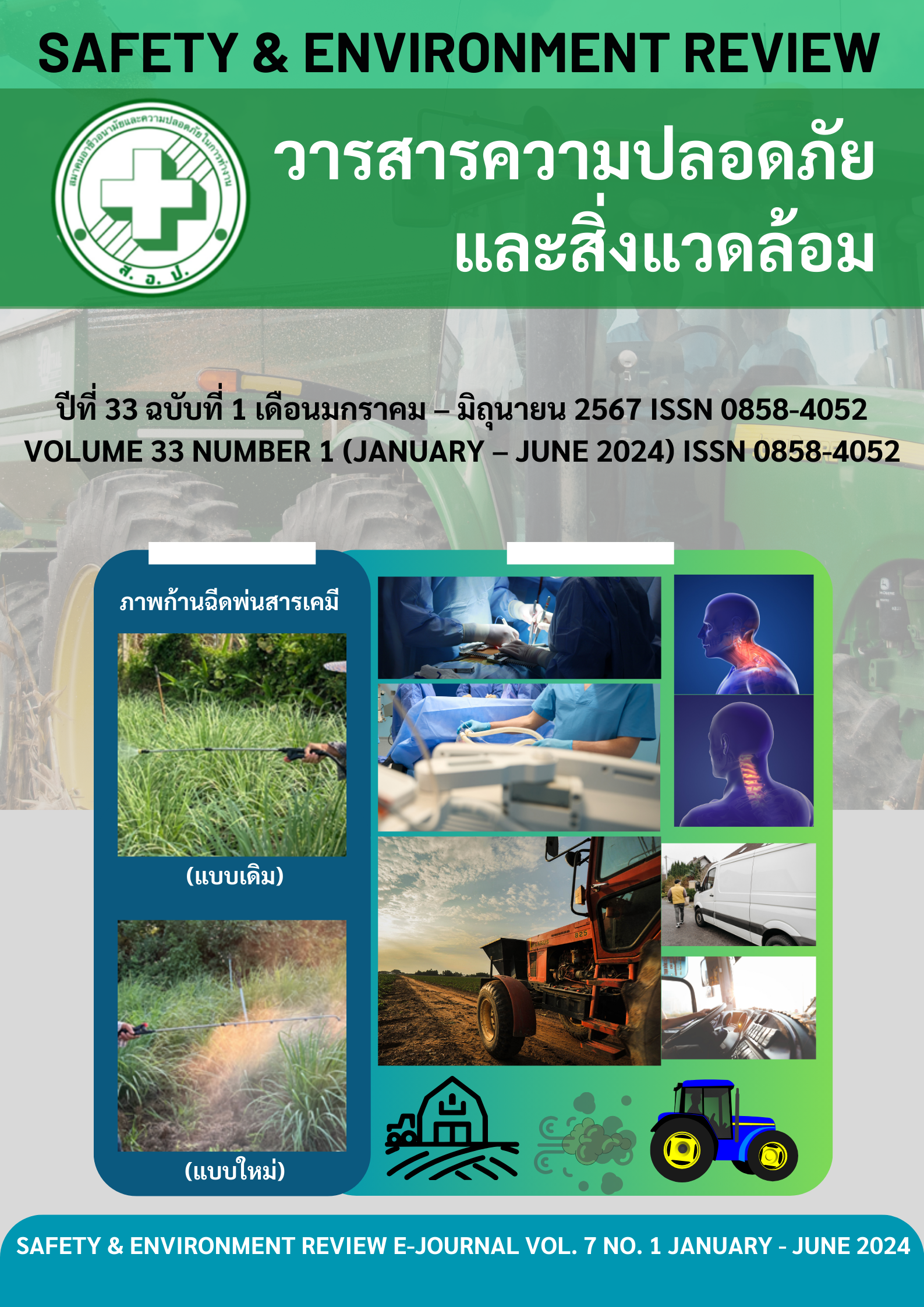THE IMPROVING PESTICIDE SPRAY NOZZLE FOR REDUCING THE LIKELIHOOD OF CHEMICAL EXPOSURES: A CASE STUDY OF A FARMER GROUP IN NAKHON PATHOM PROVINCE
Keywords:
pesticide spray nozzle, likelihood of chemical exposureAbstract
The aim of the research is to improve the pesticide spray nozzle effectiveness. Analyze the decrease in the probability of chemical exposure when using pesticides both before and after the chemical sprayer is improved. This includes comparing the duration of time spent spraying, the volume of chemicals utilized, and the degree of exposure to chemicals (dose x time). In addition, find out how satisfied users are with the modified pesticide spray nozzle. To compare the pre- and post-experiment states, a single group quasi-experimental study was carried out. The example group was fifteen lemongrass producers utilized a form and a questionnaire to record the volume of liquid and time spent spraying pesticides with both the new (4 nozzle) and old (1 nozzle) spray guns. The study's findings showed that there was a significant statistical decrease (p < 0.05) in the average time and exposure dose and time when spraying with the new spray wand (4 nozzles) compared to the traditional spray wand (1 nozzle). There was also a decrease in the average amount of chemicals used when spraying with the new spray wand (4 nozzles) compared to the old spray wand (1 nozzle), but no statistical significance was found. After using the new injection tool, the majority report very high levels of satisfaction. To decrease the likelihood of additional chemical exposure, farmers should be advised to utilize the updated spray nozzle.
References
Office of Agricultural Economics. (2023). Agriculturist. Availablefrom:https://data.moac.go.th/?p=farmer. In Thai
Land Development Department. (2022). Thailand's agricultural areas. Available from: https://webapp.ldd.go.th/lpd/node_modules/img/Download/zonmap/zonmap2/agri_zone_th.pdf
Department of disease control. (2018). The Office of Risk Communication and Health Behavior Development's "Health and Disease Prevention Guide for the Public". Available from: https://www.thaihealth.or.th/โรคพิษจากสารกำจัดศัตรู-2/
Huovinen, M., Loikkanen, J., Naarala, J., & Vähäkangas, K. (2015). Toxicity of diuron in human cancer cells. BIBRA, 29 (7), 1577–1586. https://doi.org/10.1016/j.tiv.2015.06.013
Gary J. Dorr, Andrew J. Hewitt, Steve W. Adkins, Jim Hanan, Huichun Zhang, Barry Nolle. (2013). A comparison of initial spray characteristics produced by agricultural nozzles. Crop Protection. 53 , 109-117.
Christos A. Damalas and Ilias G. Eleftherohorinos. (2011). Pesticide Exposure, Safety Issues, and Risk Assessment Indicators. Int. J. Environ. Res. Public Health. 8 (5), 1402-1419.
Phattharaphon Mangmee, Ajchara Jangkaeo. (2011). The Dual-System Sprayer: Design and Construction. [Naresuan University Thesis]. Available from:https://nuir.lib.nu.ac.th/dspace/bitstream/123456789/1501/1/Phattharaphon%20Mangmee.pdf
Downloads
Published
Issue
Section
License

This work is licensed under a Creative Commons Attribution-NonCommercial-NoDerivatives 4.0 International License.
This article is published under a Creative Commons Attribution-NonCommercial-NoDerivatives 4.0 International License (CC BY-NC-ND 4.0), which allows others to share the article with proper attribution to the authors and prohibits commercial use or modification. For any other reuse or republication, permission from the journal and the authors is required.



